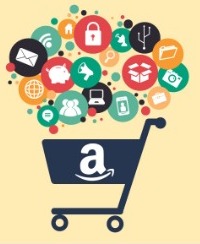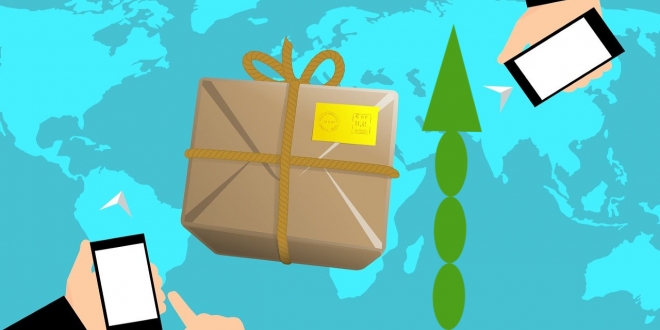There’s lots of chatter and noise about the importance of e-commerce and how merchants are doing with online sales during the coronavirus crisis.
If you needed any proof that e-commerce will be critical for every business going forward, we’ve got highlights of the latest research that shows who’s winning and there are a few surprises.
Kohl’s carries on online

Kohl’s reports that its online sales grew 24% during its Q1 ending May 2 with online sales jumping more than 60% during April. That can’t replace all those lost in-store sales as overall sales were down 45% to $2.16 billion from $3.82 billion in Q1 2019. But it’s still pretty impressive.
While they don’t break out sales, 45% came from its online channels, compared with 21% in Q1 2019. Kohl’s also said 40% of sales were fulfilled by its stores and its curbside delivery program launched in 900 stores in April, delivered 15% of products sold to consumer homes.
In a call with analysts, CEO Michelle Gass highlighted the importance of mobile sales, where 50% of online sales were completed on mobile devices which also generated more than 70% of its online traffic. Not to mention its 16 million app users.
Best Buy bumps up online sales

In its Q1 results, Best Buy showed similar positive online sales which were up 155% to reach $3.34 billion. E-commerce generated 42.2% of sales compared with 15.9% last year when stores were still open.
Total sales however declined 6.6% to $7.92 billion in Q1 compared to $8.48 billion the year previously.
Target and Walmart took digital sales higher
Target’s digital sales grew 141% over last year as shoppers stocked up on essential goods and groceries during the pandemic. CEO Brian Cornell said the cost of increased wages, store cleaning and other expenses related to the COVID-19 pandemic cost the company an additional $500 million
Larger online sales were accompanied by higher costs to package and ship products to consumers and that led to lower profits.


While Walmart closed Jet.com and consolidated its digital operations, it also saw substantial growth of 74% in its Q1 online sales ending May 1. Walmart moved quickly in the past year to use more than half of its 4,800 US stores to fulfill online orders and four times more shoppers tried curbside pickup including those over 50 years of age.
“We continue to leverage our unique assets in ways only Walmart can,” e-commerce CEO Marc Lore told analysts. Walmart’s marketplace grew faster than its own digital sales, attracting new brands such as Champion, Keds, and Rayban to its Walmart.com marketplace. Walmart also reported more than $900 million in COVID-19 related expenses.
Another indicator of the importance of digital to Walmart is its 103.2 million app downloads which are growing although Amazon still has a huge lead with 207.3 downloads of its shopping app.
Wayfair found a way to higher e-commerce sales

Online seller Wayfair saw its online sales surge 20.9% in Q1 and overall sales in the first several weeks of Q2 showed an impressive 90% growth over the previous timeframe last year.
Consumers quarantined at home were spending more to decorate and outfit their homes while they wait out the pandemic. “Starting in mid-March, we saw a pickup in both traffic and conversion, with increasingly strong repeat behavior coupled with an acceleration in new customer orders,” CEO Niraj Shah said in an analysts’ call.
While Wayfair lost $285.87 million in Q1 2020, net revenue reached $2.33 billion, up 20.1% from the previous year. Profitability for the company is not far off. Average order value reached $235 and 54.8% of purchases were made on mobile devices.
Amazon amazes again
Amazon continues to report impressive online sales as well, helped along by the pandemic as shoppers search for safety, health, and cleaning supplies as well as essentials for the home.

The company reported Q1 revenue of $75.45 billion of which $10.22 billion were from subsidiary Amazon Web Services. That compares to Q1 2019 revenue of $59.47 billion
Amazon CFO Brian Olsavsky also told CNBC it will spend $1 billion on COVID-19 testing of its employees by the end of the year and an estimated $4 billion, it’s expected Q2 profit on coronavirus-related expenses this year.
While many e-commerce operators reported challenges in delivery because of increased volume, Amazon said its delays were primarily due to merchant and supply chain problems getting products to the Amazon warehouses, rather than its own delivery system.
While Amazon continues to blaze new trails in e-commerce and mainstream retailers try to catch up, rumors persist that Amazon is taking a serious look at JCPenney as a possible acquisition. That could really disrupt the retail landscape across the US.
Stay tuned. The e-commerce world gets more interesting every day, in every way, from payments and logistics to big data, robotics, and artificial intelligence.








LET’S CONNECT